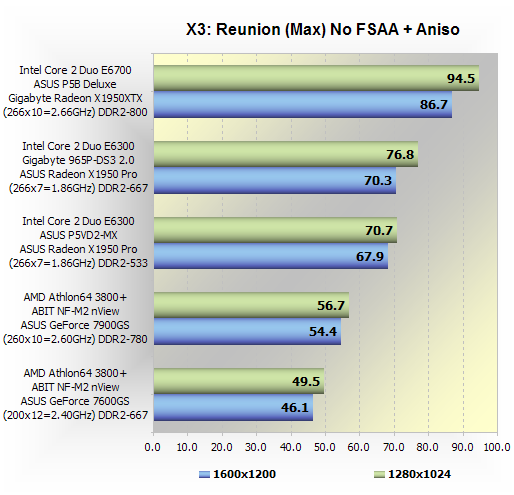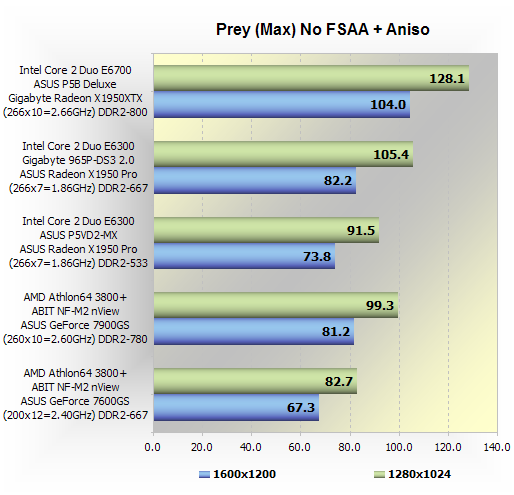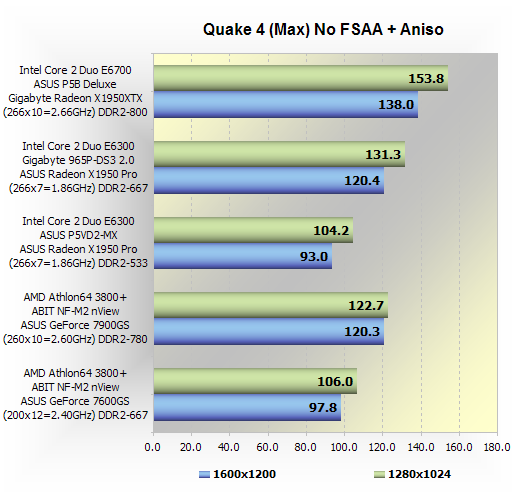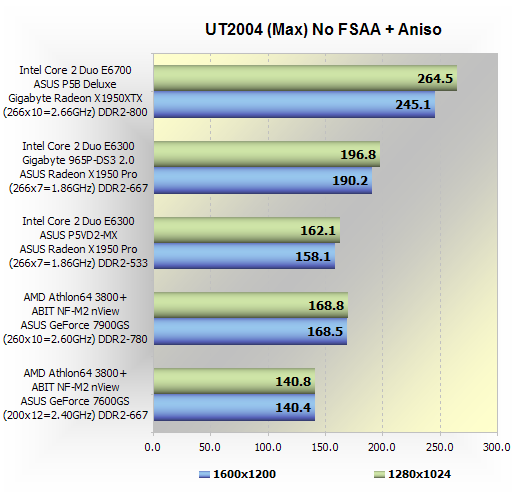Real-World Gaming

Now for the all important real-world testing. Despite being absolutely creamed in the memory bandwidth and synthetic 3D testing, the E6300 using the single-channel ASUS P5VD2-MX motherboard does quite well in X3: Reunion. It was 6fps slower at 1280x1024, but at 1600x1200 this margin closed to less than a frame per second. That said, both E6300 configurations were significantly faster than the Athlon64 3800+. The E6300 system using the Radeon X1950 Pro was around 15fps faster than the Athlon64 3800+ using the GeForce 7900GS.

Although the overclocked Athlon64+ system using the 7900GS was walked all over in X3: Reunion, it did make quite a comeback in Prey to match the E6300 using the X1950 Pro. At 1600x1200 the E6300 was just a single frame per second faster rendering 82fps. The E6700 system using the much faster X1950XTX graphics card defeated the E6300 by just 22fps or 27%.

Again, this time in Quake 4, the overclocked Athlon64 3800+ was able to match the standard E6300 performance-wise. The E6300 using the X1950 Pro was only 18fps slower than the E6700 using the X1950XTX. The single-channel E6300 configuration on the other hand was slower than the non-overclocked Athlon64 3800+ system.

Finally we have UT2004, which tends to show some bias towards Core 2 Duo processors. That being the case, the single channel E6300 system was almost as fast as the overclocked Athlon64 3800+. The dual channel E6300 system on the other hand raced ahead of the pack coming second only to the E6700 system.